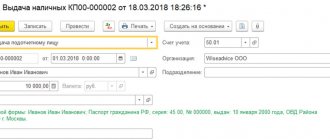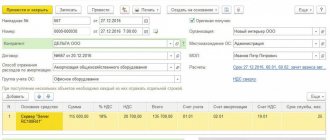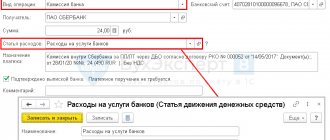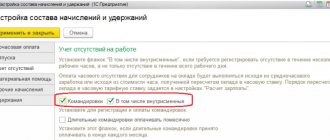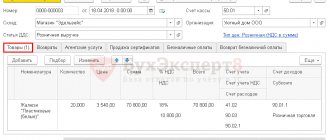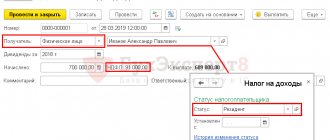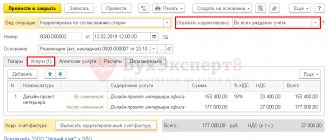Cash delivery by employee
Often, companies do not use the services of special collection services and transport money themselves to be credited to a bank account. In this case, how do you draw up documents and make accounting entries? The document confirming the fact of transportation of funds is the RKO. In the order, among other mandatory data, it is necessary to indicate the full name of the responsible employee; his passport details. When receiving cash, the employee must sign the order.
After the money is deposited into the account, the organization is issued a bank receipt. This form is attached to the RKO. There are two types of wiring:
- Upon receipt of funds to the account on the day of transportation - D 51 K 50.
- When cash is credited on the next working date - D 57 K 50 (at the time of transfer of funds to the employee), D 51 K 57 (at the time of transfer of funds to the account).
Proceeds transferred to bank transaction
Quote (Portal "Tax-Tax" 09.09.2015): Accounting entries for cash transactions. Entries for cash transactions reflect cash flow (receipt, issuance of money for reporting, settlements with employees for wages) from business entities. Let's consider what kind of cash transactions transactions are used to document certain situations.
Postings for accounting for cash transactions Cash transactions show the cash flow of business entities. To reflect the actions of accepting and issuing funds, a cash receipt order (PKO) and an expenditure cash order (COS) are issued.
An increase in funds can be made from the following sources: current account, transactions with customers, funds of accountable persons, other income.
In accounting entries for cash transactions when posting cash in debit, account 50 “Cash” is used: Dt 50 Kt 50 - movement of monetary assets between cash desks (if there are several cash desks); Dt 50 Kt 51 - receipt of money from the bank; Dt 50 Kt 71 - receipt of the remaining amounts from accountables; Dt 50 Kt 73 (76) - other settlements, including with employees of the organization; Dt 50 Kt 62 - the buyer paid in cash; Dt 50 Kt 75 - increase in the authorized capital due to the contribution of the founders in cash; Dt 50 Kt 91 – sale of other assets of the enterprise for cash, reflection of exchange rate differences. The disposal of funds is recorded by an expense cash order. If there is a decrease in cash in the cash register, the following entries are possible using account credit 50: Dt 51 Kt 50 - receipt of money from the cash register to the bank account; Dt 70 Kt 50 - salaries were issued to employees; Dt 73 Kt 50 - loans to employees; Dt 71 Kt 50 - receipt of money by accountables; Dt 76 Kt 50 - other payments from the cash register; Dt 75 Kt 50 - payment of income to the founders; Dt 91 Kt 50 - reflection of differences in exchange rates; Dt 94 Kt 50 - reflection of shortages in the cash register. Responsibility for failure to comply with cash discipline
Business entities are responsible not only for the correct execution of cash documents, but also for the completeness of cash receipts. The statute of limitations for violations of cash transactions is short and is only 2 months.
The tax office has the right to hold violators administratively liable if errors are discovered. According to paragraph 1 of Art. 15.1 of the Code of Administrative Offenses of the Russian Federation, the fine for organizations can reach 50,000 rubles.
For individual entrepreneurs and managers under the same article, fine payments will amount to 4,000–5,000 rubles.
What are cash transactions
Cash transactions mean operations in which an organization issues and accepts cash in the form of banknotes or coins. The organization can issue and accept funds to both legal entities and individuals. Conducting cash transactions is regulated by the procedure described by the Tax Code of the Russian Federation.
The main cash operations include receiving and issuing cash, storing funds in the cash register and transferring them to the bank. All operations are carried out subject to mandatory compliance with the cash limit, the amount of which is determined by each enterprise individually and recorded in the relevant documents.
The following receipts can be made to the cash desk:
- payment by the buyer (customer) for goods, services, work;
- return of funds by an accountable person previously issued for business needs or travel expenses;
- revenue from the sale of products in a retail chain;
- loan settlements;
- payment of interest on shares;
- refund by the supplier;
- receipt of funds purchased by the organization from the bank.
The basis for depositing cash into the cash register is a cash receipt order.
Funds can be disbursed from the cash register for the following purposes:
- payment of remuneration to employees (wages, bonuses, bonuses, etc.);
- payment for goods, works, services (both in the form of an advance payment and for goods actually received);
- insurance compensation, the payment of which is provided for in the insurance contract;
- issuing funds to employees on account (both for household needs and for travel expenses).
Only funds received as proceeds from sold goods (works, services) can be issued from the cash register. If the organization is an intermediary or is engaged in commission trading, then all funds received for payment in favor of third parties must be transferred to the bank.
The basis for issuing cash from the cash register is an expense cash order.
All cash transactions must be reflected in the cash book.
Postings for basic cash transactions
To account for cash in the cash register, as well as to reflect cash turnover, account 50 is used.
Let's look at the basic cash register transactions using examples.
Cash receipts and write-offs
The issuance of funds to employees on account, as well as the issuance of wages, are the most common basis for the receipt of funds from the bank for their subsequent write-off.
Receipt of cash to the cash desk can be carried out by an accountable person when returning the balance of funds that were not used for business needs or during a business trip.
Let's look at each of the situations described above using examples.
Bonus LLC pays wages to employees through the cash register. The amount to be issued is RUB 964,000.
The following entries will be made in the accounting of Bonus LLC:
| Dt | CT | Description | Sum | Document |
| 50.01 | 51 | Money was received from the bank to the cash desk of Bonus LLC to pay wages | RUB 964,000 | Receipt cash order |
| 70 | 50.01 | Salaries were paid to employees of Bonus LLC | RUB 964,000 | Expense cash order, payroll sheet |
Let's consider another example with the issuance and receipt of funds through the cash register:
Mercury 1 LLC issued funds on account to employee A.G. Medvedev. in the amount of 11,500 rubles. The money was issued for the purpose of purchasing paper for accounting needs. Upon purchase of the paper, Medvedev provided an advance report and a receipt for payment in the amount of 9,840 rubles, VAT 1,501 rubles. Balance of unused funds Medvedev A.G. deposited into the cash register.
In the accounting of Mercury 1 LLC, these transactions were reflected as follows:
| Dt | CT | Description | Sum | Document |
| 71 | 50.01 | Medvedev A.G. funds were issued on account | 11,500 rub. | Account cash warrant |
| 10 | 71 | The purchased paper was accepted for accounting (RUB 9,840 - RUB 1,501) | RUB 8,339 | Advance report, payment receipt |
| 19 | 71 | The amount of VAT from the cost of purchased paper has been allocated | RUB 1,501 | Receipt of payment |
| 68.02 | 19 | The VAT amount is accepted for deduction | RUB 1,501 | Payment receipt, invoice |
| 50.01 | 71 | Medvedev A.G. the amount of unused funds was returned to the cash desk (RUB 11,500 - RUB 9,840) | RUB 1,660 | Receipt cash order |
Cash collection
Let's say:
LLC "Magnit Plus" was transferred to the collector in cash retail proceeds for delivery to the bank and crediting to the current account in the amount of 856,000 rubles. According to the agreement, the cost of collection services is 0.15% of the collected amount.
The following entries were made in the accounting of Magnit Plus LLC:
| Dt | CT | Description | Sum | Document |
| 57 | 50.01 | Cash proceeds are transferred to the collector for delivery to the bank | 856,000 rub. | Expenditure cash order, receipt for collection bag |
| 51 | 57 | The funds were received by the bank and credited to the current account of Magnit Plus LLC | 856,000 rub. | Bank statement |
| 91.02.1 | 51 | The amount of collection services for accepting and counting cash was written off (RUB 856,000 * 0.15%) | RUB 1,284 | Bank statement |
Postings for shortages at the cash register
Let's assume that when transferring funds in the amount of 856,000 rubles. a shortage was identified (RUB 8,400)
In this case, the accountant of Magnit Plus LLC will reflect the following transactions in accounting:
| Dt | CT | Description | Sum | Document |
| 57 | 50.01 | Cash proceeds are transferred to the collector for delivery to the bank | 856,000 rub. | Expenditure cash order, receipt for collection bag |
| 51 | 57 | The funds (minus the shortfall) were received by the bank and credited to the current account of Magnit Plus LLC (856,000 rubles - 8,400 rubles) | RUB 847,600 | Bank statement, recount statement |
| 94 | 57 | The amount of the shortage is reflected | 8,400 rub. | Recount act |
| 91/2 | 51 | The amount of collection services for accepting and counting cash was written off (RUB 847,600 * 0.15%) | RUB 1,271 | Bank statement |
Payment of funds to founders in the form of dividends
Let's say:
Olymp LLC decided to distribute the profit received at the end of 2015 between the company's participants - founder Petrenko and director Sidorenko. The share of the founder Petrenko, who is not an employee of Olimp LLC, is 465,000 rubles, the share of director Sidorenko is 118,000 rubles.
The following entries were made in the accounting of Olimp LLC:
| Dt | CT | Description | Sum | Document |
| 84 | 75/2 | Calculation of the amount of distributed profit (founder Petrenko) | RUB 456,000 | Minutes of the board's decision |
| 75/2 | 68 personal income tax | Withholding personal income tax from the amount of profit distributed in favor of the founder Petrenko (RUB 456,000 * 13%) | RUB 59,260 | Minutes of the board's decision |
| 84 | 70 | Calculation of the amount of distributed profit (Director Sidorenko) | 118,000 rub. | Minutes of the board's decision |
| 70 | 68 personal income tax | Withholding personal income tax from the amount of profit distributed in favor of director Sidorenko (RUB 118,000 * 13%) | RUB 15,340 | Minutes of the board's decision |
| 75/2 | 50/1 | Payment of income to founder Petrenko | RUB 396,740 | Account cash warrant |
| 70 | 50/1 | Payment of income to director Sidorenko | RUB 102,660 | Account cash warrant |
In addition to non-cash payments, an enterprise can carry out operations for the receipt and expenditure of cash, called cash transactions. Let's look at examples of how cash transactions are recorded, as well as accounting entries for the cash register.
Example 2. Postings for cash collection
Lichi LLC transferred the retail proceeds to the collector for transportation to the bank and subsequent crediting of funds to the bank account in the amount of 915,000 rubles. According to the agreement, the cost of collection services is 0.14% of the collected amount.
The accountant of Lichi LLC reflected the cash collection with the following entries:
| Account Dt | Kt account | Transaction amount, rub. | Wiring Description | A document base |
| 57 | 50-1 | 915 000 | The proceeds are transferred to the collector | KO-2, transmittal sheet |
| 51 | 57 | 915 000 | Funds are credited to the account | Account statement |
| 91.02.1 | 51 | 1 281 | Write-off of bank commission for receiving and recalculating funds | Account statement |
Example 3. Postings for payment of dividends from the cash register
It was decided to distribute the profit at the end of 2015 of Lichi LLC among its participants - the founder of Piktiv A.N. (not an employee of the organization) and director Amok K.A. The founder's share is 457,000 rubles, and the director's share is 121,000 rubles.
The accountant of Lichi LLC generated the following entries for the payment of dividends to the founder and director:
| Account Dt | Kt account | Transaction amount, rub. | Wiring Description | A document base |
| 84 | 75-2 | 457 000 | Accrual of profit Piktiv A.N. | The decision of the general meeting on the payment of dividends |
| 75-2 | 68 personal income tax | 59 410 | Personal income tax withheld | Help-calculation |
| 84 | 70 | 121 000 | Accrual of profit Amok K.A. | The decision of the general meeting on the payment of dividends |
| 70 | 68 personal income tax | 15 730 | Retained by NFL | Help-calculation |
| 75-2 | 50-1 | 397 590 | Payment of income Piktiv A.N. | General meeting decision on payment of dividends, KO-1 |
| 70 | 50-1 | 105 270 | Payment of income to Amok K.A. | General meeting decision on payment of dividends, KO-1 |
What entries in the company's accounting should be made when depositing cash proceeds to the bank? The answer depends on who transports the funds - your own employee or the collector. Let us consider, using an example, how the delivery of proceeds to the bank is formalized, and the entries drawn up at the same time.
Depositing money to the bank through a cash collector
If a company engages collection services to transport funds, such an operation is reflected in accounting in a special way. In accordance with paragraphs. 2.4, 9.6, 9.7 Regulations of the Central Bank of the Russian Federation No. 318-P dated April 24, 2008, the responsible cashier of the organization transfers the money to the collector in a bag with the required documents attached. The set consists of a statement (put in the bag), an invoice (handed to the collector) and a receipt (remains with the cashier). Additionally, the RKO is drawn up in the usual manner.
The delivery of money to the collector is recorded in the accounting entry:
- D 57 K 50 - according to RKO and the receipt filled out for the bag with cash.
Upon receipt of funds to the bank account, a record is made:
- D 51 K 57 – for the amount of cash deposited according to the bank statement.
Transfer of trading proceeds to the bank posting by an employee of the enterprise
After all, the RKO is the primary document.
Secondly, the cashier does not have the right to give out money until the recipient signs and writes the amount in words. 4.3 Provisions.
Thirdly, the cash settlement must be fully completed (including all attachments) already at the time of issuing money from the cash register. 4.2 Regulations; clause 3 art. 9 of the Law of December 6, 2011 No. 402-FZ. This means that the details of the bank receipt in the “Appendix” line in the cash register cannot serve as a replacement for the recipient’s signature. After all, the receipt appears later, when the bank accepts the money.
How dangerous. Of course, tax authorities do not fine you for such a violation. The danger is different: if all or part of the money suddenly does not reach the bank for some reason, the cashier becomes suspicious. After all, the employee may claim that he received less from the cashier than indicated in the cash register, or that he received nothing at all - anything can happen.
Important
The bag containing the cash and the invoice will have to be handed over to the collector.
Also, when transferring funds, the authorized person will have to fill out a special appearance card. When accepting a bag with cash, the collector will have to sign the receipt that is attached to the bag and leave a stamp on it.
This receipt remains with the organization.
The procedure for the actions of an authorized person is provided for in the Regulations of the Central Bank of the Russian Federation dated January 29, 2018 No. 630-P. In a banking institution, the bank cashier will have to reconcile the amount of funds that was actually transferred to him from the organization with the amount indicated in the announcement.
Attention
The article from the magazine "MAIN BOOK" is relevant as of July 5, 2013, magazine No. 14 for 2013.
The organization does not use the services of collection services, and cash from the cash register is taken to the bank for crediting to the current account by one of the employees. In such a situation, how to issue a cash settlement when issuing money from the cash register - should there be f.
And. O. and the passport details of this employee and his signature? Different organizations approach this issue differently. Let's look at commonly used methods and decide which ones can be used and which ones are not necessary.
Method 1.
wrong and dangerous. in RKO there is no mention at all of the employee who takes money to the bank
that is, the “issue” line remains empty or the name of the bank is indicated in it. in the line “ground” they write “for crediting to a current account in such and such a bank.”
Funds received at the evening cash desk are processed on the same day so that they can be used for cash register transactions the very next day in the morning.
When transferring money to the evening cash desk of the bank, the person depositing these funds will have to fill out the appropriate announcement and hand it over to the controller. further, the controller will have to reconcile the funds reflected in the announcement and those actually transferred to him, and if everything is correct, he will sign the document.
after this, the controller must register the amount of the contribution in the cash register upon receipt, then the announcement will be transferred directly to the bank cashier.
but, if the proceeds are deposited in the bank in the evening, it will be credited to the current account only the next day.
secondly, the cashier does not have the right to issue money until the recipient signs and writes the amount in words.
a shortage was identified (8,400 rubles) in this case, the accountant of Magnit Plus LLC will reflect the following transactions in accounting: dt kt description amount document 57 50.01 cash proceeds transferred to the collector for delivery to the bank 856,000 rubles.
expense cash order, receipt for collection bag 51 57 cash (minus shortage)
cash deposited from the cash register to the bank transaction
The basis for issuing cash from the cash register is an expense cash order. All cash transactions must be reflected in the cash book.
To be credited to the organization’s current account in such and such a bank.”
***
Organizations have sorted out the preparation of RKO. How to draw up a consumable document for depositing money into a bank from an individual entrepreneur?
If he himself conducts cash transactions and hands over cash from the cash register to the bank, then an “impersonal” cash settlement service is also suitable, that is, method 1. And if one of these is done by his employee, you need to record the transfer of money between him and the individual entrepreneur, then There is use method 3.
EXPENDITURE CASH ORDER Document number Date of preparation 1-153 05/31/2013 (last name, first name, patronymic) (in words) cop. (in words) cop.
No. 630-P
If a bank employee, when examining cash, finds questionable banknotes, he will have to send them for appropriate examination, and will also have to draw up the following list of documents:
- Order for the transfer of valuables.
- The act of opening a bank bag with cash and recalculating funds.
- A certificate stating that the questionable banknotes were submitted for examination (2 copies).
The procedure for working with questionable banknotes is prescribed in the Regulations of the Central Bank of the Russian Federation dated January 29, 2018.
However, the downside is that entries in the cash book are made late.
prednalog.ru
What wiring will reflect this?
The standard situation is when small businesses register the transfer of money to the bank by posting: Dt 51 “Current account” Kt 50 “Cash desk” This is possible, but it’s not entirely correct, since the money has already been withdrawn from the cash register, but not transferred to the current account yet arrived.
Account 57 “Transfers in transit” precisely reflects this movement of proceeds from the enterprise to the bank in real time, although this operation takes less than one day.
How to correctly collect revenue from a retail outlet, bypassing accounting
As a result, it turns out that in order to comply with all cash requirements, you first need to hand over the proceeds to the main cash desk and only then to the collectors, , ; . It is quite obvious that when retail outlets and accounting departments are located far from each other or have different operating hours, and revenue must be submitted to the bank daily, it is impossible to fulfill this requirement.
Therefore, organizations have to get out. Let's see how. Organizations are forced to adapt to the current cash order.
METHOD 1. Companies issue cash orders and fill out the cash book retroactively so that the revenue, at least on paper, passes through the main cash register on the day it is received and handed over to collectors.
This is how organizations, albeit formally, manage to fulfill the requirements of “cash” legislation.
The announcement for a cash contribution includes 3 documents:
- The ad itself.
- Order.
- Receipt.
If cash is handed over to collectors, then before their arrival an authorized person (cashier, senior cashier) must prepare the funds, which must be placed in a special bag issued by the bank and draw up the following list of documents:
- Invoice for a bank bag.
- Transmittal sheet.
- Receipt for the bag.
The authorized person must insert the statement directly into the bank bag containing the cash. Next, the bag should be sealed so that it cannot be opened unnoticed during transportation.
The bank teller, after accepting the cash, will have to sign the announcement, order and receipt and hand over the receipt with the evening cash register stamp to his client.
Step-by-step instructions on how to donate proceeds:
- Pass. The delivery of the proceeds itself must be carried out in accordance with the requirements of the financial service. The cashier of the organization must select funds from the proceeds after receiving an order to deposit the proceeds. When withdrawing the proceeds, the cashier of the organization may leave part of the cash in order to further carry out cash transactions.
- Don't give up. According to the current Directive of the Central Bank of the Russian Federation, namely paragraph 7, paragraph 2 of March 11, 2014 No. 3210-U, legal entities are required to keep funds in a bank account in excess of the limit that was established “at the cash desk”.
The size of the cash balance limit is determined in accordance with the instructions of the financial service.
Source: https://zakon02.ru/sdacha-torgovoj-vyruchki-v-bank-provodki-rabtnikom-predpriyatiya/
Guard! Counterfeits at the cash register
But in fact it is present.
Now let’s look at what sources can cover the shortfall. In this case, the shortage is written off from the enterprise’s own funds: Debit 91-2 Credit 94 RUB 2,000.
— the shortage is written off at the expense of the organization’s own funds. But the situation changes if the cashier’s workplace was equipped with a device that verifies the authenticity of banknotes.
That is, counterfeit money could be detected through the use of this equipment.
This means that the cashier is at fault.
How to deposit the balance of funds to the bank
In the cash receipt order, in particular, indicate:
- in the line “Issue” - the last name, first name, patronymic of the organization employee who collected and handed over the bag of cash to the bank collectors;
- in the line “Appendix” – the attached primary documents, their numbers and dates of preparation.
This procedure follows from paragraph 3 of clause 4.6, clause 6 of the instructions of the Bank of Russia dated March 11, 2014.
No. 3210-U and explained in the letter of the Bank of Russia dated October 16, 2015.
Handing over money to a collector - example
Let’s assume that on April 2, a trading company sold products worth 315,000 rubles. The cash limit is set at 15,000 rubles; you need to deposit 300,000 rubles to the bank. To do this, the cashier prepared a bag with cash and filled out the accompanying documents according to the general regulations. In RKO for 300,000 rubles. on the line “Issue” the full name of the cashier transferring the means is indicated, on the line “Attachment” - the details of the receipt. Such recommendations of the Central Bank are contained in Letter No. 29-1-1-OE/4065 dated October 16, 2015.
The bag with cash and the enclosed statement is sealed. Then the cashier hands the bag to the collector along with the invoice. The receipt signed by the collector and the cash register remain with the organization.
Delivery of proceeds to the bank through a cash collector - posting:
- D 57 K 50 for 300,000 rubles. – on the day of transfer of cash to the collector.
- D 51 K 57 for 300,000 rubles. – on the day the funds are credited to the company’s account.
Accordingly, the delivery of money to the collector is always recorded as an accounting entry through an account. 57, and when transporting funds by a company employee, posting D 51 K 50 can also be used. But only if the cash is credited to the account by the bank on the same day.
Postings to the cash register: payment of dividends, issuance of reports, collection
In addition to non-cash payments, an enterprise can carry out operations for the receipt and expenditure of cash, called cash transactions. Let's look at examples of how cash transactions are recorded, as well as accounting entries for the cash register.
Accounting for cash transactions
Transactions related to the receipt, disposal, and movement of funds in accounting are reflected in account 50 “Cash”. Accounting for cash transactions is possible if there are primary documents drawn up in accordance with the legislation of the Russian Federation.
Primary cash documents:
- PKO (KO-1) – the receipt of funds at the cash desk is registered;
- RKO (KO-2) reflects the outflow of funds from the cash register;
- Journal of registration of incoming and outgoing cash documents (KO-3) - intended for registration of primary documents of incoming and outgoing cash orders (form KO-1 and KO-2);
- Cash book (KO-4) – records all movements on the cash register.
The main cash transactions are presented in the figure:
Accounting for cash transactions is presented schematically in the figure:
Get 267 video lessons on 1C for free:
Example 1. Postings for issuance from the cash register to the reporting
Lichi LLC has a cash limit of 60,000 rubles. The cash balance at the beginning of the working day is 21,450 rubles. Operations for the working day: payment received from customers in the amount of RUB 36,240. and 15,625 rubles, funds were issued to the accountable person for the purchase of stationery for the office - 9,000 rubles. The total receipts to the cash desk amounted to 51,865 rubles.
The accountant of Lichi LLC compiled the following accounting entries for the cash register:
| Account Dt | Kt account | Transaction amount, rub. | Wiring Description | A document base |
| 71 | 50 | 9 000 | From the cash register of Lichi LLC, funds were issued to the accountable person | KO-2, statement from the accountable person |
| 50 | 62 | 36 240 | Payment from the buyer | KO-1, cash receipt |
| 50 | 62 | 15 625 | Payment from the buyer | KO-1, cash receipt |
The balance of cash in the cash register at the end of the day is 64,315 rubles. The cash surplus must be handed over to the bank in accordance with cash discipline.
Example 2. Postings for cash collection
Lichi LLC transferred the retail proceeds to the collector for transportation to the bank and subsequent crediting of funds to the bank account in the amount of 915,000 rubles. According to the agreement, the cost of collection services is 0.14% of the collected amount.
The accountant of Lichi LLC reflected the cash collection with the following entries:
| Account Dt | Kt account | Transaction amount, rub. | Wiring Description | A document base |
| 57 | 50-1 | 915 000 | The proceeds are transferred to the collector | KO-2, transmittal sheet |
| 51 | 57 | 915 000 | Funds are credited to the account | Account statement |
| 91.02.1 | 51 | 1 281 | Write-off of bank commission for receiving and recalculating funds | Account statement |
Example 3. Postings for payment of dividends from the cash register
It was decided to distribute the profit at the end of 2015 of Lichi LLC among its participants - the founder of Piktiv A.N. (not an employee of the organization) and director Amok K.A. The founder's share is 457,000 rubles, and the director's share is 121,000 rubles.
The accountant of Lichi LLC generated the following entries for the payment of dividends to the founder and director:
| Account Dt | Kt account | Transaction amount, rub. | Wiring Description | A document base |
| 84 | 75-2 | 457 000 | Accrual of profit Piktiv A.N. | The decision of the general meeting on the payment of dividends |
| 75-2 | 68 personal income tax | 59 410 | Personal income tax withheld | Help-calculation |
| 84 | 70 | 121 000 | Accrual of profit Amok K.A. | The decision of the general meeting on the payment of dividends |
| 70 | 68 personal income tax | 15 730 | Retained by NFL | Help-calculation |
| 75-2 | 50-1 | 397 590 | Payment of income Piktiv A.N. | General meeting decision on payment of dividends, KO-1 |
| 70 | 50-1 | 105 270 | Payment of income to Amok K.A. | General meeting decision on payment of dividends, KO-1 |
Source: https://BuhSpravka46.ru/buhgalterskie-provodki/provodki-po-kasse-vyiplata-dividendov-vyidacha-v-podotchet-inkassatsiya.html

